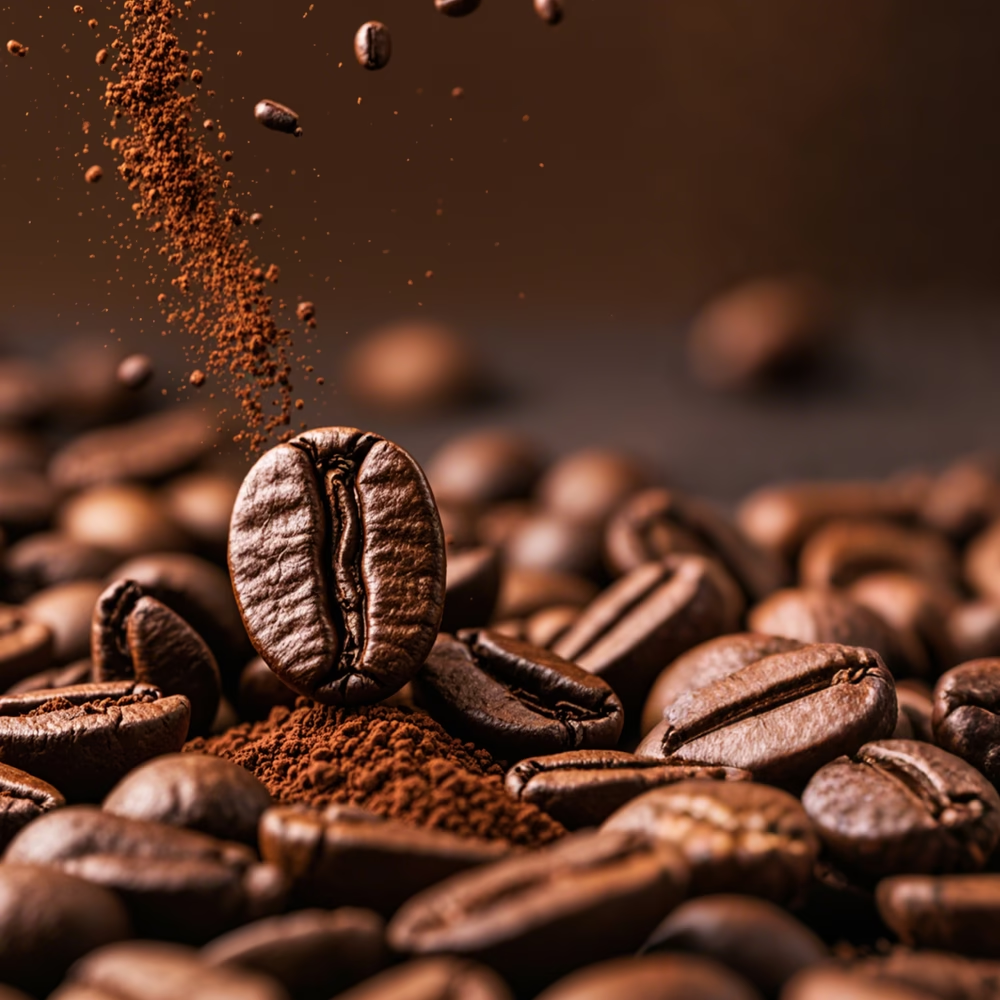I’ve been exporting coffee machines for 11 years, and one question follows me across continents: “Why does my client’s light roast taste like citric acid, or their dark roast like burnt rubber?” The answer isn’t “bad beans”—it’s roast level misalignment with machine settings. Every roast tells a story: of how heat unlocks sugars, mellows acids, or deepens bitterness. And your machines? They’re the narrators.
Today, let’s decode roast levels from light to dark—what flavors emerge, why they change, and how to set your clients’ machines to make those flavors shine (not fizzle).

The Science of Roast: Heat as a Flavor Alchemist
Before we dive in, remember: roasting is controlled decomposition. Green coffee beans (starchy, grassy) transform as heat breaks down acids, caramelizes sugars, and releases oils. The longer the roast, the more these changes accelerate—and the bigger the flavor shift.
1. Light Roast: The “Terroir Explorer”
Roast Profile: Stops at “first crack” (196°C/385°F), barely into development time. Beans stay light brown, with dry, matte surfaces.
Flavor Magic: Bright, acidic, and delicate. Think red currant, jasmine, or green apple—plus subtle sweetness from retained sugars. Light roasts preserve the bean’s origin character (“terroir”)—why Ethiopian Yirgacheffe tastes floral or Colombian Supremo hints at caramel.
Machine Match: Precision is non-negotiable.
- Water Temp: 90–94°C (195–201°F). Too hot? Over-extracts acids, making it sour. Too cold? Under-extracts sugars, leaving it flat.
- Extraction Time: 25–30 seconds for espresso; 2:30–3:00 for pour-over.
- Export Hack: A Norwegian specialty cafe we supply uses our Sheen 870 PID machine—its ±0.5°C temp stability keeps light roasts balanced. Returns for “too acidic” dropped 30% after they switched.
Target Markets: Europe (Scandinavia, Germany), Australia, and U.S. craft coffee shops where “origin story” drives sales.
2. Medium Roast: The “Balanced Bridge”
Roast Profile: Ends mid-first crack (205°C/401°F), with slight oil sheen. Beans turn medium brown.
Flavor Magic: The Goldilocks zone—acids mellow, sugars caramelize, and body thickens. Expect notes like milk chocolate, toasted almond, or ripe pear—no bitter edges, no grassy aftertaste. Medium roasts appeal to “I want coffee, not a science experiment” clients.
Machine Match: Forgiving, but still needs care.
- Water Temp: 92–96°C (198–205°F). A little hotter brings out caramel notes; cooler keeps it light.
- Extraction Time: 28–32 seconds for espresso; 3:00–3:30 for pour-over.
- Export Hack: A U.K. chain selling medium-roast blends uses our semi-automatic machines with adjustable grinders. Baristas tweak grind size (finer for darker roasts, coarser for lighter) to hit the “sweet spot” every time.
Target Markets: North America, U.K., and Southeast Asia—markets where “approachable” beats “experimental.”
3. Medium-Dark Roast: The “Bold but Not Burnt” Pick
Roast Profile: Just after first crack ends (215°C/419°F), with visible oil on beans. Color deepens to dark brown.
Flavor Magic: Caramelized sugars dominate, acids fade further, and body becomes syrupy. Notes like dark chocolate, roasted peanut, or dried fig come through—smooth, with a hint of smokiness. Perfect for clients who want “rich” without bitterness.
Machine Match: Watch for oil buildup.
- Water Temp: 94–98°C (201–208°F). Hotter extracts more body; cooler avoids ashiness.
- Extraction Time: 30–35 seconds for espresso—longer pulls bring out nutty notes.
- Export Hack: A Dubai cafe struggling with “bitter medium-dark roast” switched to our anti-clog group heads. The machine’s stainless steel filter baskets prevent oil residue from tainting future brews.
Target Markets: Middle East, Russia, and parts of Africa—where bold, full-bodied coffee is preferred.
4. Dark Roast: The “Intensity King”
Roast Profile: Goes deep into second crack (225°C/437°F), with shiny, oily beans. Color is nearly black.
Flavor Magic: Acids and sugars break down completely—what’s left is roast character: smoky, woody, or even charred. Oils add body, but terroir is gone. Dark roasts are for clients who want “coffee that hits hard”—think espresso shots with thick crema or French press that’s “strong enough to stand a spoon up.”
Machine Match: High maintenance, but worth it.
- Water Temp: 96–99°C (205–208°F). Too cool? Under-extracts oils, leaving it thin. Too hot? Burns beans, amplifying bitterness.
- Extraction Time: 28–30 seconds for espresso—shorter pulls avoid over-roasting flavors.
- Export Hack: A Saudi brand selling dark roast blends uses our commercial espresso machines with dual boilers. One boiler keeps water at 98°C for espresso; the other preheats cups to prevent heat loss (critical for dark roasts, which cool fast).
Target Markets: Southeast Asia, Latin America, and budget-conscious buyers—where “strong, cheap” often wins.
FAQs: Real Pain Points from Export Buyers
Let’s solve the questions I get weekly:
Q: My Japanese client hates light roast—says it’s “too sour.” What do I do?
A: Try a medium-light roast (stopped 1–2 minutes into first crack). It keeps some fruitiness but mellows acidity. Pair with our pour-over cones—slow, controlled extraction reduces sourness.
Q: Dark roast sticks to my client’s portafilter—how do I fix it?
A: Two things: (1) Use a non-stick portafilter basket (our Sheen baskets have a titanium coating). (2) Wipe the group head with a dry cloth between shots—oil buildup causes sticking.
Q: Can I use light roast in a super-automatic machine?
A: Yes—if you adjust grind size. Light roasts are harder to extract, so go coarser (like sea salt, not flour). Our super-automatic models have adjustable grinders—set it to “light roast” mode.
Wrapping Up: Roast + Machine = Flavor Magic
Coffee isn’t just beans—it’s a conversation between heat, water, and machinery. A light roast in a poorly calibrated machine? Sour mess. A dark roast in a clean, temp-stable machine? Silky crema and smoky depth.
At Sheen, we don’t just export machines—we export flavor consistency. Our new guide, *“Roast Levels 101: Match Your Beans to Your Machine”*, includes:
- A roast-level vs. machine setting cheat sheet (with PID, semi-auto, and super-auto specs).
- Troubleshooting charts for sour/ashy/bitter coffee.
- Market-specific roast recommendations (e.g., “Sell medium-dark to Dubai; light to Oslo”).
Stop letting roast confusion kill your clients’ love for coffee. Download the guide, reach out for a custom roast-machine pairing, or explore our latest models built for every roast.
Stay curious. Stay precise. Stay Sheen.
P.S. Got a roast that’s “all potential, no payoff”? Share your client’s struggle—we’ll help you dial in the perfect setup!

